 Evolution
Evolution
 Intelligent Design
Intelligent Design
More on the Panda’s Thumb: Imperfection or Masterpiece?

Readers are invited to consider my new paper, “The Panda’s Thumb: Striking Imperfection or Masterpiece of Engineering? Part 2.” The abstract is below.
Abstract (Part 2): Key Points of the Contents
First, I would like to express my appreciation as a geneticist and biologist for the important work on the molecular investigations and many other topics in the panda’s biology by a range of researchers around the globe — with in particular the huge contributions of highly qualified Chinese scientists having the largest share in this significant work. Now to the key points:
- “2.7 million heterozygous SNPs in the panda diploid genome”…“The estimated small indel rate was 1.2231024 and 0.7031024 on autosomes and sex chromosomes, respectively”… also “4,359 insertions and deletions with a median length of 150 bp, and 20 inversions.”
- On the evolutionary method for detecting “positively selected” genes.
- Panda genes underlying its unique physiological traits.
- The panda’s “closest living relatives (the bears) appear to be more than 90 per cent herbivorous.”
- What do we known about genes involved in the panda’s unique morphological traits?
- Dual oxidase 2 gene, DUOX2, in mice and pandas: substitution of C with T, resulting in an arginine to termination codon in the 16th exon of the DUOX2gene. What does it explain?
- The “Optimal Panda Principle,” considering the entire panda system.
- “Full metabolic phenotype of giant pandas likely depends on yet-unknown genetic mechanisms affecting T4 to T3 conversion, or TSH levels.”
- Forward and reverse mutations in Ailuropoda?
- In 850,000,000 000 Ursus bears the mutation in DUOX2 could have happened on the nucleotide level (forward mutation): 8,500 times (10−8 x 850,000,000,000).
- Mutations on the DUOX2 gene level: 8,500,000 times (1 x 10−5 x 850,000,000,000).
- Differences between Ailurarctos and Ailuropoda could be due to Mendelian recombination.
- There is a question whether the neo-Darwinian explanation of a 1 thousandth of 1 mm longer hook in each generation would really constitute a decisive selective advantage.
- In 40 billion panda bears: numbers of mutations: Now first the gene level for the DUOX2 gene: Forward mutations: 40,000,000,000 x 1 x 10-5 = 400,000. Reverse mutations: 40,000,000,000 x 1 x 10-6 = 40,000. Nucleotide level: 400 and 40 respectively. “The apparently new mutations are not new; they are truly immemorial, as old as the mother species itself” (Nilsson).
- What has happened to all these mutations — at least those affecting the phenotype?
- The Qinling panda.
- Constancy (stasis) of and in the subfamily Ailuropodinae to which the pandas belong (family Ursidae). See the figure at the bottom by Roland Slowik, Dietzenbach, Germany, for the present article (July 15, 2024).
- Options concerning the origin of pandas.
- Some arguments for the theory of intelligent design.
- Authors for intelligent design.
- More points that could be discussed.
Please note: As already mentioned in other articles of mine (for example: https://www.weloennig.de/Hippo.pdf), virtually all highlighting or emphasis in the typeface is by W.-E. L. (except italics for genera and species names as well as adding a note when the cited authors themselves emphasized certain points). Why so often? Well, since many people do not have the time to study an extensive work in detail, these highlights can serve as keywords to give a first impression of what is being discussed in the respective paragraphs.
Concerning a few key points: Page numbers may change in a future update, so are not presented here. Incidentally, citations do not imply the consent or agreement of the authors quoted with my overall views nor vice versa. Moreover, I alone am responsible for any mistakes. On some questions concerning absolute dating methods, see http://www.weloennig.de/HumanEvolution.pdf, p. 28.

